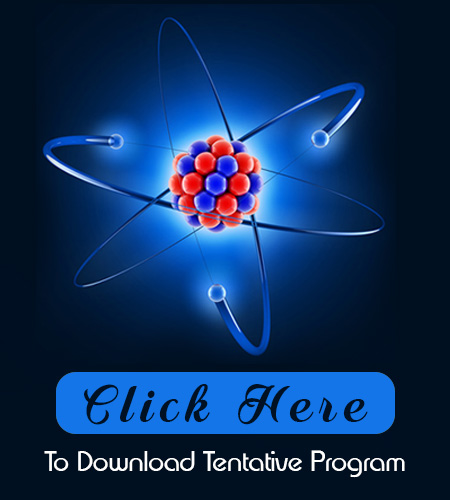
Masayoshi Tanaka
Kobe Tokiwa University, Japan
Title: Research activity on experimental nuclear physics aided by atomic physics
Biography
Biography: Masayoshi Tanaka
Abstract
The last century was no doubt, an epoch-making century for physics. Guided by the new concept such as the quantum mechanics, and the special and general relativities, the territory of physics was broadened diversely from the elementary particles to the cosmos in size, from 10-6 to 10+8 K in temperature, and from inanimate to animate objects. In particular, the discovery of the atomic nucleus by E. Rutherford in 1911 and the quantum mechanical interpretation of hydrogen atom by N. Bohr in 1913 greatly contributed in opening a new window of physics. Even now, atomic and nuclear physics keep on evolving as heart and soul of the modern physics. Today, I am going to emphasize how deeply nuclear physics research I have committed for long time has been luckily helped by atomic physics in my talk. My first job as a nuclear physicist is to determine the magnetic sub-state populations of the product nucleus implanted in a metallic foil following the nuclear reaction. However, experimental results could not uniquely predict the magnetic sub-state populations. For breaking this difficulty, we must decide the sign of eqQ (electric quadrupolar interaction) of the product nucleus in the metal. This was done by combining the particle-γ angular correlation measurement of this nuclear reaction. Thus, new information on the nuclear wave function of the product nucleus was extracted successfully. We started, after that, developing the polarized 3He ion source for nuclear physics at an intermediate energy region. The device used an ECR (Electron Cyclotron Resonance) ionizer, and laser optical pumping. My experience at MPI, Heidelberg and CEN, Grenoble decisively helped in promoting our project. People from
either domestic (Osaka, Konan, and Niigata) or foreign institutes (Dubna, Madison, and Vancouver) joined us from time to time to contribute to atomic physics as well as nuclear physics. Meanwhile, we succeeded in experimentally proving the principle of electron pumping, which an extended concept of the optical is pumping, i.e., electrons can play a role of photons in the optical pumping. The latest 10 years have been spent on the development of the Hyperpolarized MRI (Magnetic Resonance Imaging) for medical diagnosis as presented in this conference.

